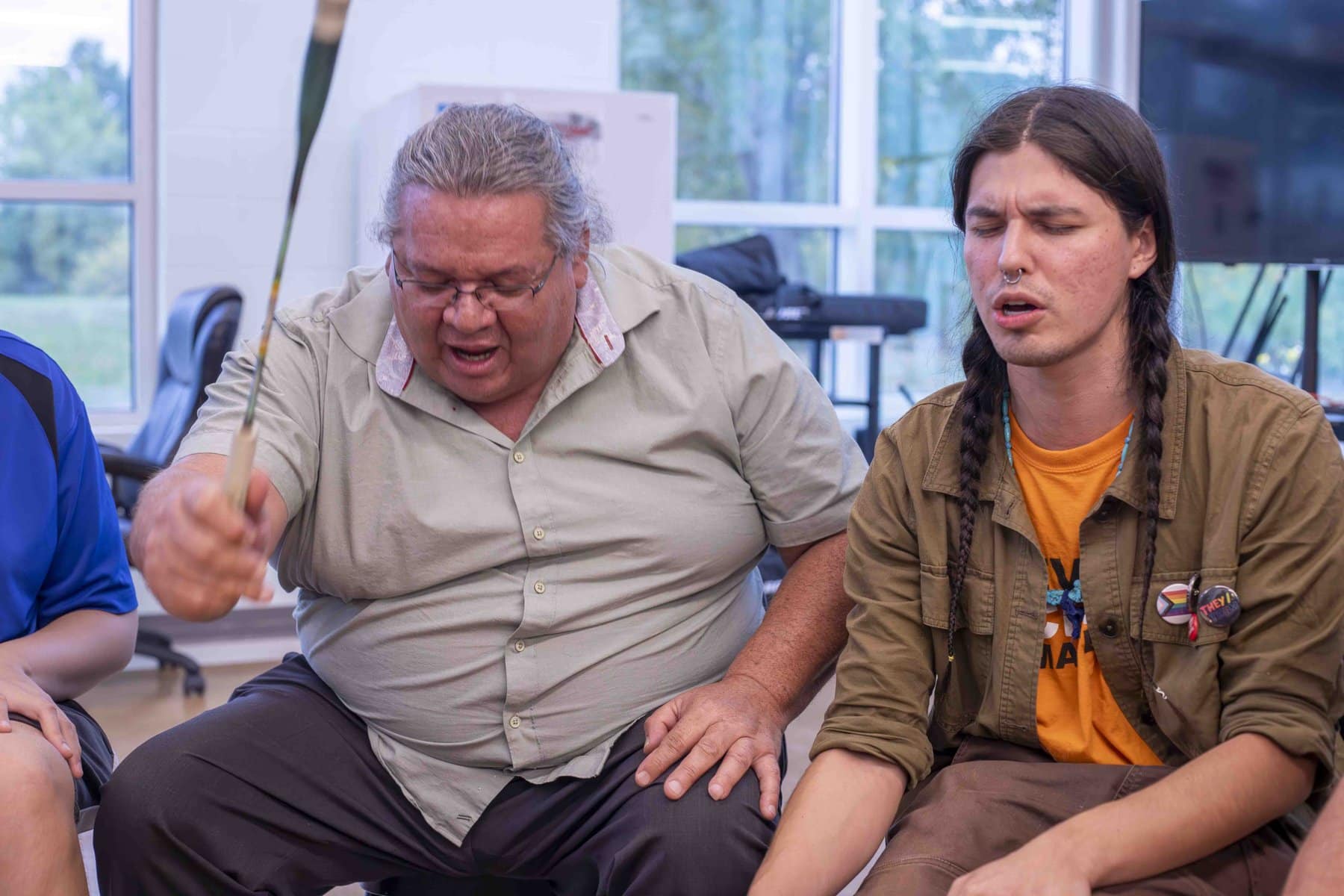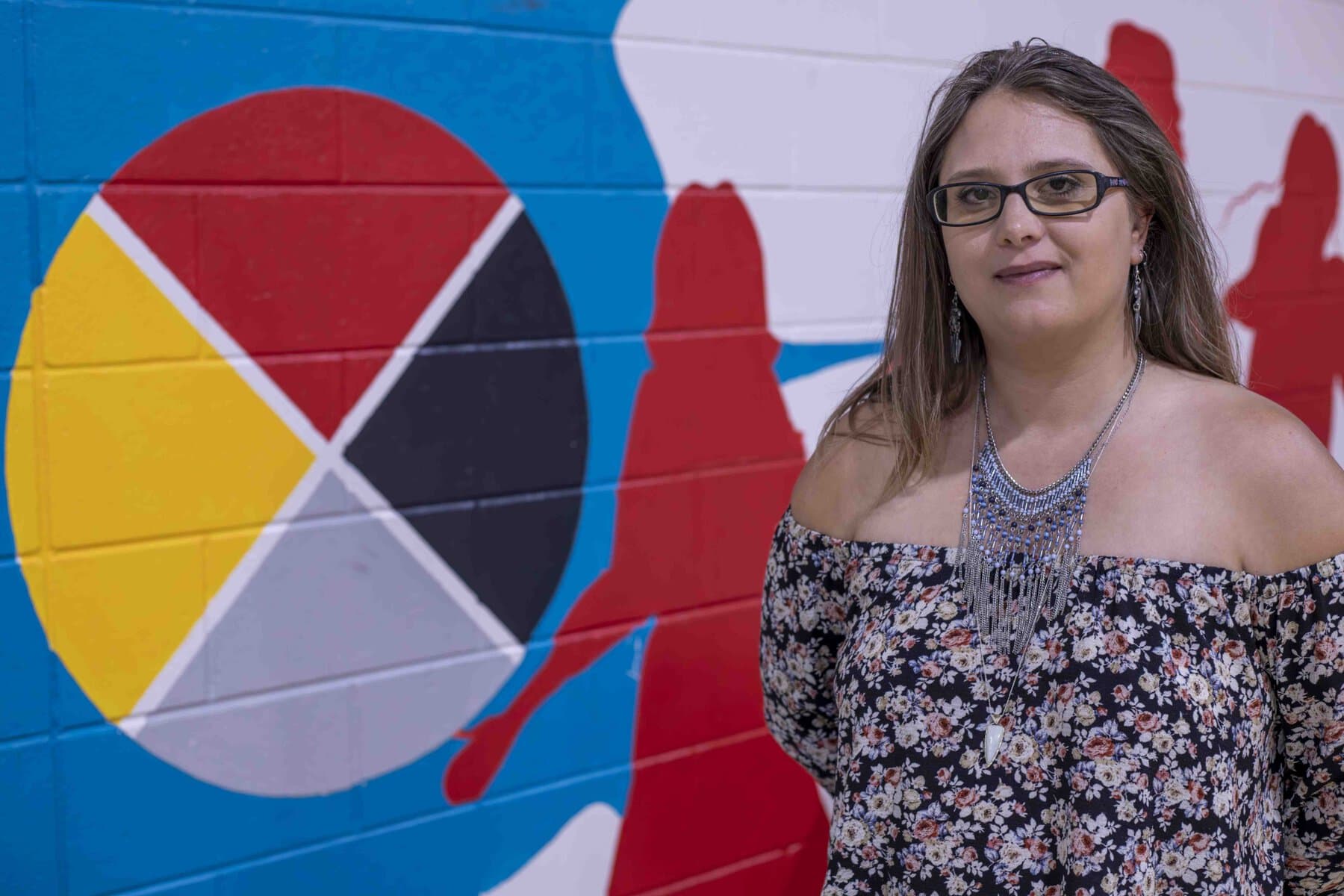While some in Indigenous communities feel optimistic about the path toward truth and reconciliation, others say there’s a long way to go.
Phil Davis, who helps lead the men’s drum circle on Monday nights at the Niagara Regional Native Centre in Niagara-on-the-Lake, said life was a lot worse 50 years ago.
Much has changed since the Canadian government completed the Truth and Reconciliation Commission in 2015, Davis said.
“I feel very comfortable speaking my reality,” he told The Lake Report at a drum circle Monday night.
“We know our realities that we’ve lived through,” he added.
One reality is that there are dead children buried on the grounds of some residential schools, a reflection of the high mortality rate in those institutions.
It’s been hard to get out the truth of what happened in residential schools, Davis said.
It’s not enough, he said, that Indigenous people lived through it: people want to see scientific data proving it.
“There’s your science and data in the ground right there,” he said.
For Davis, reconciliation is about putting Indigenous people back “in control of our own destiny.”
It’s important to make sure Indigenous people are represented in positions of leadership, especially on school boards and in the healthcare system, he said.
The community is just starting to gain seats at the table, he said, and wondered what things would look like in 20 years.
But for Larissa Engels, support co-ordinator of the centre’s Homeward Bound program, reconciliation moves slowly and the truth is still stuck in the dark.
The last residential school in Canada didn’t close until 1996. “That intergenerational trauma exists, and it is still being felt today.”
“Bringing the truth forward is about educating and acknowledging the true history of Indigenous peoples,” she said.
She remembers it wasn’t until she went to university that she learned about the legacy of residential schools.
“I actually had to pay to learn my history,” she said.
Truth, she said, was also about correcting false narratives about Indigenous people.
While her peers are trying their best to remember everyone who was hurt by residential schools, Engels thinks of her grandfather, Cecil Murdock, this time of year.
She wasn’t sure if her grandfather went through residential schools, but she “knew he was scooped.”
Scooping refers to another assimilation practice adopted by the Canadian government during the 1960s, also known as the ‘60s Scoop.
“Indigenous children were taken from their families and put into the foster care system and adopted out to non-Indigenous people around the world,” the National Centre for Truth and Reconciliation says on its website.
The practice resulted in severing children from their families, cultures and languages.
Engels remembers in 2017, her grandfather become sick. That was around the time she started drumming and singing.
“I remember the first time I came home and I sang the ‘Seven Grandfathers’ song for him. And he cried.”
“It had been so long since he had heard the drum,” she said.
Josephine Lavalley, an Onondaga woman from Six Nations, was also at the centre’s drum night.
She said she doesn’t want people to get stuck on the atrocities of the past, or for “white people to feel guilt for what their ancestors did.”
“I want them to be at peace with the past,” she said.
The Yellowhead Institute, an Indigenous research centre at Toronto Metropolitan University, released a report in December 2022 which found only 13 of the 94 calls to action outlined in the Truth and Reconciliation Commission had been answered.
The report said at the current rate it would take 42 years to complete them all.
The two calls to action completed in 2022 were “completed by non-governmental professional associations,” the report said.
Engels said this progress is “very little in the grand scheme of things.”










